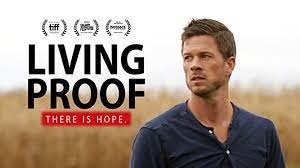Mastering Your MS: A Holistic Approach
Did you know that around the world, the number of people with MS is exploding rapidly? On average, an increase of 30% every decade! There’s now nearly three million people worldwide with MS. In Australia, MS is experiencing a 30% increase every five years! And in the US, there’s over one million people estimated to be living with MS.
Even more shocking is the fact that the rise in MS has been paralleled by a similar rise in just about every other type of auto-immune disease over the last decade as well (and there are over 100 different documented cases of auto-immune disease ). It’s estimated that a staggering 4% of the world’s population has at least one autoimmune disease. Imagine that! 315 million people…. which means global health care spending on treating autoimmune diseases like MS is now topping $140 billion.
The question is, why? Why are auto-immune diseases like MS increasing so dramatically? And the answer is a little complicated. Firstly there are better testing and detection methods now, which means more people are being classified as having an auto-immune disorder. Then there’s the triggers – partly genetic (some people are more likely to develop symptoms based on their family history) partly exposure to slow-acting viruses (like Epstein Barr, measles and herpes), partly changes to the gut microbiome (bacteria) as the result of bad lifestyle choices and bad diet and partly a weakened immune system (resulting from excessive antibiotic use, exposure to nasty chemicals and not enough exposure to the outside world). Usually, however it’s a combination of triggers that tips the scales and causes the body to start attacking itself. There’s more on this in my other blogs - see my website www.katfinnerty.com
SO IS THERE A CURE?
The general medical consensus is no, there is no cure. But then what’s the definition of a cure? Is it long-term remission together with a dramatic improvement and/or a reversal of symptoms? If so, then I, and many others like me who have undertaken stem cell therapy in combination with effective immune reconstitution treatments (IRT drugs) like Lemtrada and/or strict diet and exercise regimes, are proof you can effectively cure yourself of MS. Have I rid myself of MS entirely? Who knows? Either way, the fact remains that there’s now a choice of highly effective treatments for MS that can restore some semblance of normal life. And no doubt the same holds true for other auto-immune diseases.
HIT IT HARD AND HIT IT EARLY
Having suffered for decades with MS, I’m a firm believer that you have to take the risks in order to reap the rewards. Most neurologists I’ve met are way too conservative in their treatment plans. As far as I’m concerned you need to hit it hard and hit it early. And the science has definitely reached a point where it’s now backing me up. But don’t just take my word for it. Prof. Gavin Giovannoni , one of the top global experts in MS treatments based at The London School of Medicine, is also urging neurologists to treat MS early with high-efficacy treatments. He bases his stance on findings that immune reconstitution treatments (IRTs), such as mitoxantrone, alemtuzumab and haematopoietic stem cell transplantation (HSCT), have led to disease stabilisation for over ten years in some patients. He notes these strategies potentially represent a ‘cure’ from MS in a proportion of these patients. Yes, there’s that word again – CURE. Given that the major inflammatory damage occurs within the first five years of the disease – and that the goal of treatment should be to prevent damage in the first place, Prof. Giovannoni advocates early treatment as opposed to ‘watchful waiting’.
And I absolutely agree with him. I had mesechymal stem cell therapy (MSCT) as well as Lemtrada (alemtuzumab) and in combination with a strict diet/exercise routine and daily yoga/mind therapy I reversed nearly all of my previous MS symptoms. And I’m not the only one. Actress Selma Blair is now in remission after undergoing stem cell therapy and professional golfer Tony Johnstone managed to continue to play golf and win competitions after going into remission for over 14 years following treatment with alemtuzumab.
SO WHAT IS STEM CELL THERAPY?
Stem cell therapy essentially reboots a faulty immune system. It shows the most promise in halting the progression of MS and unlike many of the MS drugs currently being used, it can actually improve or even reverse MS symptoms (physical and mental) by rebuilding the myelin sheaths around nerve fibres damaged by MS. The most popular stem cell therapy currently used world-wide to treat MS is autologous hematopoietic stem cell transplantation (AHSCT). A study of some 2100 people treated for MS using this type of stem cell therapy showed that the incident of MS relapse was low, and so were the risks (less than the risk of death in a hip operation).
A recent study carried out by Prof. Roland Martin, another leading expert on MS based in Switzerland, found that 80% of patients who underwent AHSCT remained disease-free long term or even forever following the treatment. If that’s not a cure I don’t know what is. The caveat being the older you are and the longer the MS is left to do damage before the treatment, the less likely the therapy will restore function lost before the treatment. Researchers are currently working hard to make the AHSCT therapy less toxic and are investigating new stem cell treatments like MSC-NP treatment.
The problem being, in countries like England, Australia and the US, stem cell therapy as a treatment option is recommended only as a third-line therapy after first- and second-line disease modifying therapies (DMTs) fail to control MS symptoms. Which means that most MS patients are being allowed to accumulate a number of disabilities before they are offered the most effective treatments.
“That is just not right,” says Prof. Giovannoni. “We should be treating MS like stroke, where time is of the essence. And we should be offering newly diagnosed patients the most effective treatments such as monoclonal antibody–based therapies and AHSCT first to prevent too much organ damage.”
Flipping the treatment pyramid to provide the most effective treatments first has made huge improvements in treating other autoimmune diseases such as rheumatoid arthritis, but so far the idea of flipping the treatment approach for MS has not be widely accepted. And it really should be, along with a holistic approach to tackling the disease.
DMTs AND IRTs
The available evidence suggests that several monoclonal antibodies (natalizumab, ocrelizumab, alemtuzumab (lemtrada), and ofatumumab and an oral DMT (cladribine) have the highest efficacy. These drugs have been show to reduce the number of relapses, reduce the severity of relapses and reduce the development of new areas of inflammation as seen on magnetic resonance imaging (MRI) scans. Some have shown evidence of delaying disease progression and/or disability. As I mentioned before I have personal experience with Lemtrada, and although I suffered from some serious side-effects, I believe it played a major role in my recovery from MS.
DIET AND LIFESTYLE
BUT remember, drugs and stem cell therapy ARE NOT ENOUGH! If you really want to change your life you have to transform your diet and lifestyle as well. Diet and lifestyle have a huge effect on MS symptoms and progression. I know because I’ve experienced this, having gone to great lengths to do whatever it takes to put my MS in remission. And I’ll go into this in greater detail in another blog.
But for now check out the documentary on Netflix called Living Proof by Matt Embry. It explores this in much more depth as does Matt’s website, www.mshope.com It’s a great resource base for anyone looking to tackle MS holistically. Dr. Terry Wahls website and TED talks (which have garnered more than 4 million views) are also a fantastic resource and have lots of useful information. Both Terry and Matt claim to have cured their MS and reversed many of their symptoms. Then there’s Australian researcher Dr. George Jelinek, the developer of the Overcoming MS diet, who says strict adherence to his diet plan in combination with other therapies and lifestyle changes can potentially cure MS (he himself has been symptom free for over a decade). And finally there’s the author of the MS book Beat Immune, Palmer Kippola who has not only cured herself but also many others with her Functional Medicine Health Transformation programs based around diet and the gut microbiome. Recent studies are now showing why this works – it seems that if the gut microbiome gets out of balance or if the immune system controller found in “barrier tissues” such as the intestine gets reprogrammed then harmful, chronic inflammation results. So diet and lifestyle play a big role in resetting this.
In fact, more research is currently underway to fine-tune the immune response using the microbiome, which could save patients from dealing with the harsh side effects of immunosuppressant drugs. In the meantime, sticking to a healthy, low fat diet, in combination with a better lifestyle – less drinking and smoking, more exercise, more sunlight and getting down and dirty in the outdoors – helps prevent relapses and improves fatigue. A strong adherence to a Mediterranean diet, for example, is linked to a 20% lower risk for cognitive impairment.
EXERCISE
When I was first diagnosed with MS the prevailing opinion was not to prescribe on-going physio or intensive exercise regimes to MS patients because it would not make any difference to the progression of the disease. I am proof that this is a false assumption. There’s always something you can do to improve your situation and exercise is definitely one of them, especially yoga. Rigorous MS clinical trials have found that yoga decreased fatigue, improves anxiety, depression, bladder function, pain, spasticity, weakness and strengthens walking. In 2014, researchers reported on the effects of aerobic exercise on brain volume and increased memory among individuals with MS who experienced memory impairment (50% of patients with MS have memory impairment due to hippocampal atrophy). As little as three 30-minute sessions per week, for three months increased brain volume in hippocampus region by a whopping 16.5% and memory improved by 53.7% in patients with MS! Wow! The results back up what I have found and that is that exercise for people with MS keeps your brain sharp and stops the fog from creeping in.
Another trial which evaluated the effects of a 12-week yoga intervention on fatigue, balance, and gait found statistically significant improvements in all three of these areas. Again, I’m living proof that intensive yoga, meditation and exercise can lead to huge improvements in MS symptoms and progression.
Check out the book, Yoga and Multiple Sclerosis: A Journey to Health and Healing, 2007 by Loren M. Fishman MD (Author), Eric L. Small (Author) for more information on this.
ELECTRICAL STIMULUS – THE MOLLII SUIT
I used to use a Dr. Ho Tens machine regularly to electrically stimulate my muscles and encourage my brain and body to form feedback loops. The Exopulse Mollii suit takes this to a whole new level. It has 58 electrodes that gently stimulate 40 muscle groups with electricity. The idea is that the electrodes inside the suit stimulate muscles that the brain cannot. It also relaxes spastic muscles. Although it can only be worn for around an hour every other day, it does offers a quick, convenient solution to regaining mobility and reducing pain brought on by spasticity. Invented by a chiropractor, Fredrick Lundqvist , the suit replaces the signal that the brain is unable to provide. In Australia the suit is available for purchase for $15 000 AUD and the National Disability Insurance Scheme (NDIS) has already approved funding for it. The majority of patients who use it experience an immediate, favorable outcome. Is it a cure? No, but the suit allows new neural pathways to develop that are advantageous to the patient’s condition and eventually rebuilds neural pathways, allowing them to use the device less and less.
MINDSET
Drugs, stem cell therapy and committing to a change in diet and lifestyle is only half the battle when dealing with MS. The other 50% is mental. Because if you don’t have the willpower, resilience and fortitude to keep going when the going gets tough then you’ll find it very difficult to make it through the hard times. And trust me, there will be hard times! Meditation and mindfulness just two examples where you can make changes to your mindset that have a direct impact on MS! A research study published in 2011 examined the effects of meditation on pain and quality of life in MS patients and found they showed a significant improvement in pain scores and scores for overall physical health, mental health, vitality, and physical role modelling. I’ll talk more about this in another blog but for now check out my website www.katfinnerty.com for additional info and help yourself to a free download of my 12 powerful principles to master your disaster.
SUMMARY
So in summary, my message to anyone reading this with MS or any other type of auto-immune disease is, don’t give up, there is a way out of the pain and suffering, don’t take no for an answer, don’t listen to anyone who says there is no cure and always, always look for ways to improve the situation you are in. Because there are alternative treatments and therapies out there that can make a huge difference to your quality of life.





